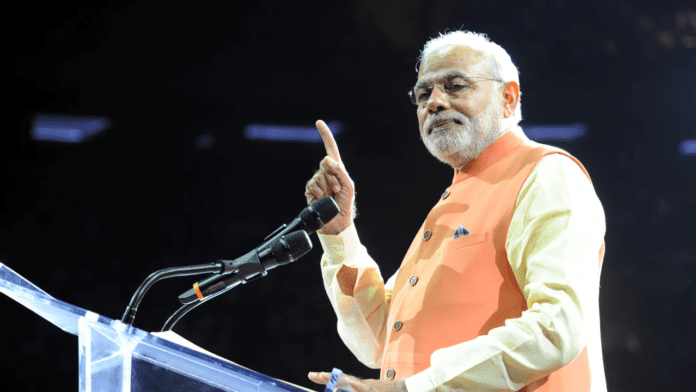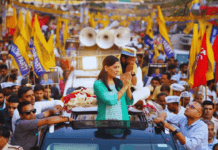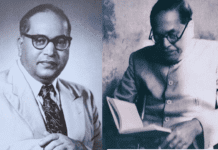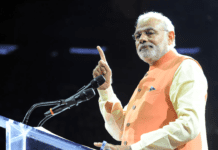Prime Minister Narendra Modi’s Ayodhya journey live update:
In Ayodhya, PM Modi stated, “The entire world is eagerly awaiting the consecration of life to the deity on January 22nd.” Addressing a rally in Ayodhya, he urged 140 crore Indians to celebrate Diwali on January 22nd.
PM Narendra Modi’s Ayodhya Journey Live Update, December 30:
With less than a month remaining for the inauguration of the Ram Temple in Ayodhya on January 22nd, Prime Minister Narendra Modi arrived in the temple city today and inaugurated the newly built Maharshi Valmiki International Airport. Addressing a mega rally in Ayodhya, Modi said that the whole world is eagerly anticipating January 22, 2024, when the consecration of the deity will take place at the Ram Temple. He also emphasized that 140 crore Indians should celebrate Diwali on January 22.Before this, the PM inaugurated the reconstructed railway station after a mega roadshow in the city.
A very special welcome in Ayodhya! pic.twitter.com/b9TMpU1bml
— Narendra Modi (@narendramodi) December 30, 2023
How PM Modi’s Day Unfolded:
Modi showcased the green flag to two new Amrit Bharat trains and six new Vande Bharat trains. Today in Ayodhya, he inaugurated and laid the foundation stone for projects worth Rs 15,700 crores during a program. These include projects related to the development of Ayodhya and its surrounding areas, amounting to approximately Rs 11,100 crores, and other projects in Uttar Pradesh totaling around Rs 4,600 crores.
Significance of Ayodhya:
The Prime Minister’s journey will prepare the outline for the consecration ceremony of the deity on January 22.This Sangh Parivar assembly marks a significant symbolic end to one of the BJP’s most significant ideological campaigns. Thirty years ago, the Ram Janmabhoomi moment led by shri Lal Krishna Advani initiated a series of events that catapulted the party from the margins of electoral politics to the forefront of national politics, culminating in the demolition of the Babri Masjid.
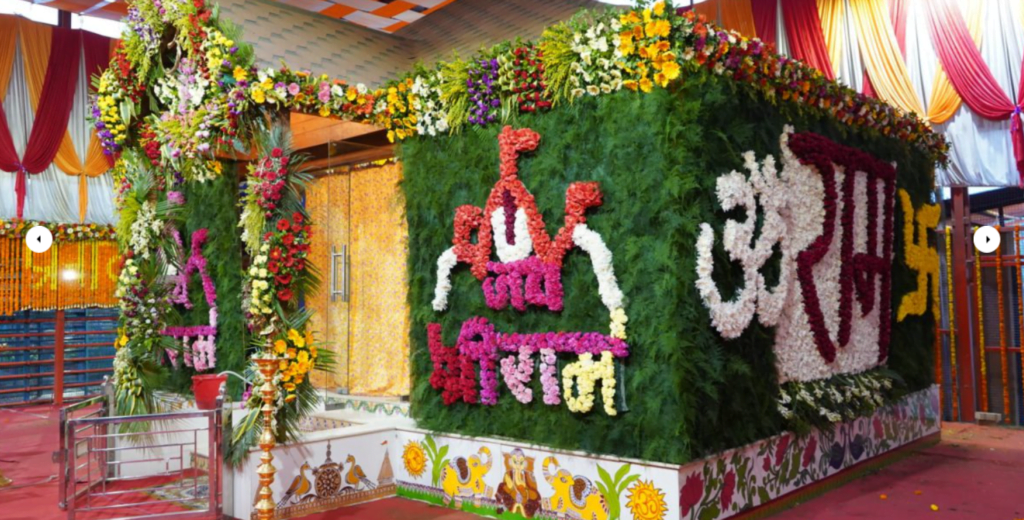
History of Ayodhya:
Ayodhya, previously known as Saket, boasts a rich heritage dating back to the 5th or 6th century BCE. located along the banks of the Sarayu River, Ayodhya has captivated pilgrims, historians, and visitors with its mythological stories and historical background.
“Explore various dimensions of Ayodhya, ranging from its inception to the splendor of its temples, and uncover intriguing facts that are not widely known.
During the Buddhist era, around the 5th to 6th century BCE, Ayodhya became the capital of the Shravasti kingdom. Some scholars believe that Ayodhya is synonymous with Saket, where it is said that Buddha resided for a while. Over the centuries, during the Maurya and Gupta dynasties, Ayodhya evolved into a major center of Buddhist religion, witnessing the construction of Buddhist monasteries and stupas.
Babri Masjid:
While Hindus believed that Babri Masjid, named after the Mughal emperor Babar, was built in Ayodhya in the 16th century after the destruction of the Ram temple, several organizations, especially from the Muslim community, disputed this claim.
In 1992, Hindu activists demolished the Babri Masjid, leading to an investigation by the Liberhan Commission.
In 2010, the Allahabad High Court ruled to partition the disputed land between the Sunni Waqf Board, the Nirmohi Akhara, and the Hindus supporting the installation of the Ram idol.The case dragged on until the Supreme Court of India’s landmark ruling in 2019, which approved the Ram temple’s construction.
Ayodhya holds lesser-known facts that intricately weave into its narrative. It is believed to have existed since the Treta Yuga, an ancient era according to Hindu cosmology.
Travel Guide to Ayodhya,Destinations Worth Seeing:
Apart from its historical importance, Ayodhya has many locations that are ideal for exploration. The Hanuman Garhi, a shrine devoted to Lord Hanuman, is one such location. Sita Ki Rasoi is another interesting location; it is thought to be the location where Goddess Sita prepared her meals while she was residing in Ayodhya.
“Infinite clay lamps cast their warm glow, symbolizing the festivities of the annual Deepotsav, an enchanting display that accentuates the city’s profound spiritual and cultural tapestry.”
Ramkot, Tulsi Smarak Bhavan, Shri Nageshwar Nath Temple, Kanak Bhavan, Mani Parvat, Korean Park, Dashrath Bhavan, and Other Notable Places to Visit in the City.
Tourists may enjoy a lot of things in Ayodhya because of its lengthy history and rich cultural heritage. Whether you’re drawn to the religious sanctuaries like Ramkot and Shri Nageshwar Nath Temple or the serene beauty of Mani Parvat, Ayodhya has something for everyone. Take in the colorful celebrations of the city’s yearly Deepotsav, which is a reflection of its deeply ingrained customs and spirituality.Explore these landmarks and immerse yourself in the enchanting tapestry of Ayodhya’s past and present.
